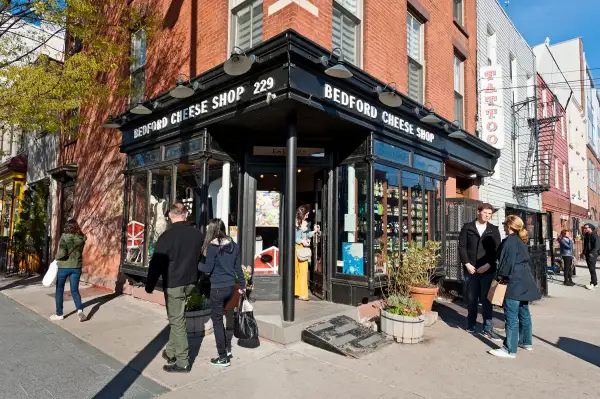A Business Owner’s Guide to Finding the Best Location for Your Store

In an age of online shopping and GPS-enabled smart phones, where you locate your store may not seem very important. But think again: Given the ease, and often the savings, associated with web commerce, having a convenient, easy-to-find location is more essential than ever. Even the latest mapping app can't always deliver customers directly to your door.
Despite slumping returns from national chains like Macy's, Kohl's, and Nordstrom, physical stores still command the bulk of the retail dollar. Only 7.5% of retail sales in this year's first quarter were from e-commerce, according to the U.S. Census Bureau.
The basic store requirement, says Steven Burke, a longtime property manager who is now a small-bsusiness adviser in Seattle, are that customers "can easily find a retail outlet that has what they want, it's easy to tell that it's open, it's easy to tell that it's warm, and inviting."
But where on the map should the store be placed? Scouting property listings is not enough. These days, a careful search demands a measure of computer analytics and a surprising amount of old-fashioned gumshoe work.
This is a two-step operation:
FINDING YOUR CUSTOMERS
A consumer-facing business usually needs to be as close to as many of those customers as possible. If you don't know who are your customers exactly, get to know those of a competitor.
Visually study who comes in and out, taking note of age, gender, how they're dressed and what they drive. Use these as proxies for income. Then find out how far they're willing to travel to shop—called the store's trade area—using research databases and sophisticated computer analysis of neighborhood demographics.
This data, from services like ESRI's Business Analyst Online and EASI Demographics, can tell you how many people with demographics you seek—how old they are, their education and income, their shopping habits, and more —live in the neighborhood. These digital tools also report how much consumers there spend on a specific product or service, and also how these characteristics have changed over time.
ReferenceUSA can identify your competitors in the area, and what their revenues are. In fact, one way to arrive at a benchmark for judging prospective locations is to analyze the demographics of a competitor’s neighborhood, perhaps in rings of three, five, and 10 miles.
These services can be expensive, but local economic development agencies, including small business development centers and many public libraries, will usually run the reports for fledgling merchants. This saves them both the time and the expense. With the data in hand, you can start to home in on properties.
PICKING A PLACE
Once you've settled on at least three prospective locations, the real work begins: making sure the property suits you and your business. Burke says that, done right, a small retailer will spend between three and six months, nailing down the particulars before signing a lease. Here are some of them:
Traffic. Are enough potential customers passing by a location to support your business? Which site has the most passersby? Only a traffic count—of both vehicles and pedestrians—will tell you for sure. Park yourself at a vantage point at different times of the day on different days of the week. Note relevant characteristics. For example, the owner of a kids' clothing store might be on the lookout for minivans or car seats.
Visibility. The more customers can see of your store, the better. In a strip mall, that means the end units are worth the premium. Businesses with an established following may be able to prosper in the cheaper, but largely hidden, inside corner space. And new businesses can possibly compensate for a poor space with robust marketing and a bigger spot on the mall’s directory sign.
Once prospects find the store, they must see that it is both open and welcoming. That, says Burke, requires more than just a sign. Drivers especially have to see lights on and people through the windows.
Neighboring stores. A popular anchor tenant is a customer magnet, and a cluster of stores that market to the same consumer, even if they sell different products, attracts prospects to all those stores. For upscale merchants in particular, ambience and aesthetics play a role—high-end goods require a high-end setting.
True costs. Besides monthly rent, if the landlord intends to bill separately for taxes, insurance, and common area maintenance (what's known as a triple net lease), find out precisely what those charges will be, as well as how much it will cost to rent space on the directory sign. Be aware if the landlord expects tenants to repair—or worse, replace—failing HVAC equipment. And bring a contractor in to estimate the cost to tailor the space to your purposes.
Parking. Make sure it is easy to drive in and out of the property and that there's enough parking for your prospective store again for different times and days—more parking lot surveillance is in order.
Be wary of neighbors, like restaurants, that absorb a disproportionate amount of parking at certain times. That also goes for big-store anchor tenants whose employees use the common parking lot. Insist that the lease specifies at least some reserved parking spaces (usually based on the store's share of the property's total square feet), and perhaps unreserved spaces, as well.
The old phrase is still apt: The three things that matter in property are location, location, location. Being smart about that is worth the work.